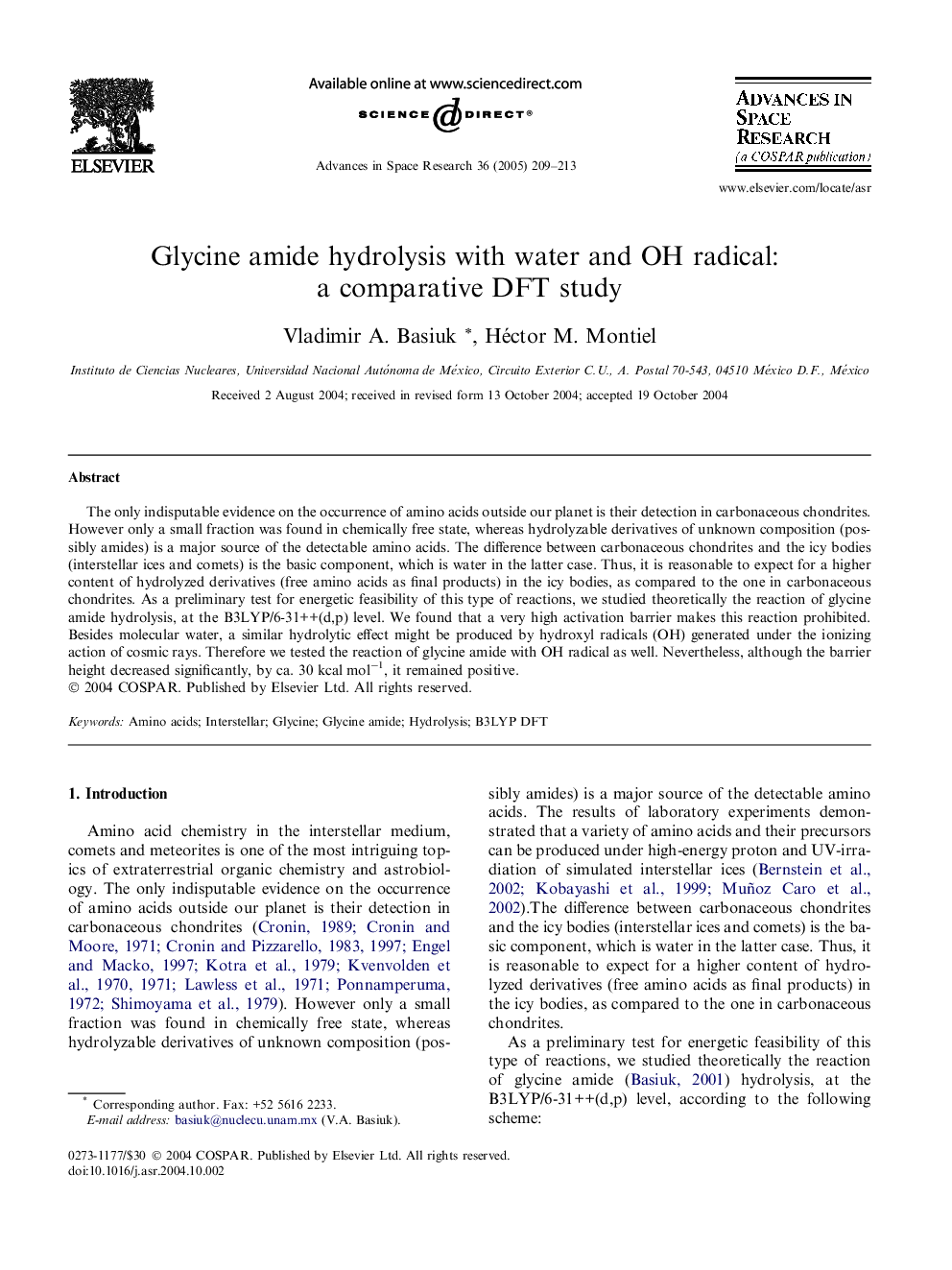| Article ID | Journal | Published Year | Pages | File Type |
|---|---|---|---|---|
| 10696874 | Advances in Space Research | 2005 | 5 Pages |
Abstract
The only indisputable evidence on the occurrence of amino acids outside our planet is their detection in carbonaceous chondrites. However only a small fraction was found in chemically free state, whereas hydrolyzable derivatives of unknown composition (possibly amides) is a major source of the detectable amino acids. The difference between carbonaceous chondrites and the icy bodies (interstellar ices and comets) is the basic component, which is water in the latter case. Thus, it is reasonable to expect for a higher content of hydrolyzed derivatives (free amino acids as final products) in the icy bodies, as compared to the one in carbonaceous chondrites. As a preliminary test for energetic feasibility of this type of reactions, we studied theoretically the reaction of glycine amide hydrolysis, at the B3LYP/6-31++(d,p) level. We found that a very high activation barrier makes this reaction prohibited. Besides molecular water, a similar hydrolytic effect might be produced by hydroxyl radicals (OH) generated under the ionizing action of cosmic rays. Therefore we tested the reaction of glycine amide with OH radical as well. Nevertheless, although the barrier height decreased significantly, by ca. 30 kcal molâ1, it remained positive.
Related Topics
Physical Sciences and Engineering
Earth and Planetary Sciences
Space and Planetary Science
Authors
Vladimir A. Basiuk, Héctor M. Montiel,
